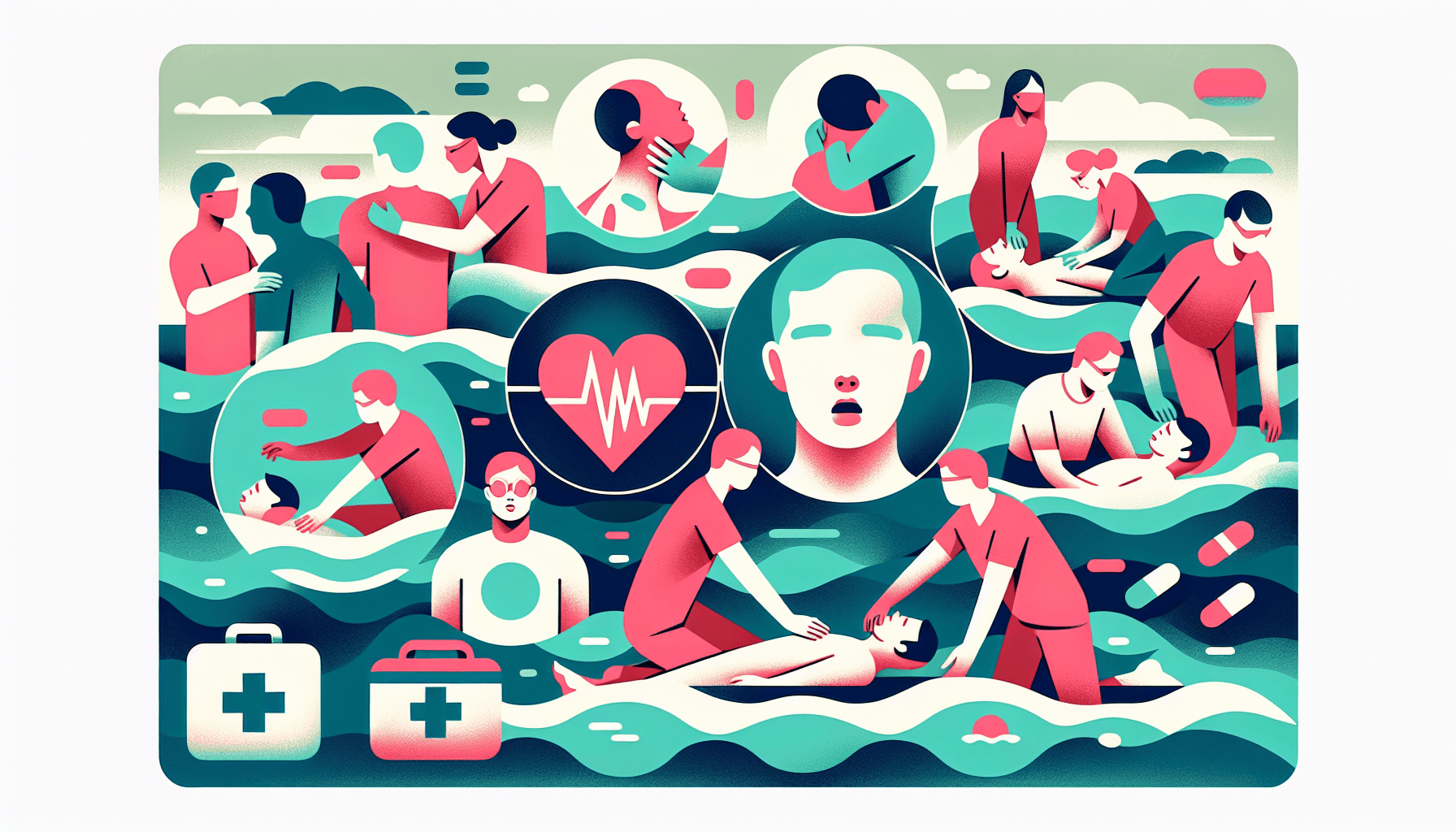Does Gabapentin Help with Sciatica?
Sciatica can cause sharp pain that shoots down your leg, making simple tasks hard. Many people wonder if gabapentin, a common medication, can ease this pain. This article [...]
Read More
Medically reviewed by Abhijit Bhattacharyya | MD, PhD, MBA, Tufts University School of Medicine - Miami, Florida on January 6th, 2024.
Knowing how to recognize the signs of drowning and provide proper first aid can save a life. In this guide, we'll cover what drowning looks like, when to call 911, and step-by-step instructions for performing CPR on adults, children, and babies.
A drowning person may not look like what you expect. They are likely to be:
Silent: There's no spare breath to call for help.
Bobbing up and down: Their mouth could dip below the water's surface, pop up just enough to breathe, and sink back down.
Stiff-armed: Instead of waving for help, their arms may be out to the side, with hands pressed down on the water to keep afloat.
Still: Their body could be straight up and down, almost like they're standing in the water, with no kicking or flailing.
A drowning person can only stay like this for 20-60 seconds before starting to sink. It's crucial to act quickly if you suspect someone is drowning.
Call 911 immediately if:
Someone is drowning.
A child is having problems breathing or has stopped breathing after being underwater.
A child has had a near-drowning episode.
Remember, children can drown in as little as 1 inch of water, not just in large bodies of water. Always keep a close eye on children around water, including hot tubs, bathtubs, decorative ponds, buckets, and toilets.
If an adult is drowning, follow these steps:
Get help. Notify a lifeguard if one is close. If not, ask someone to call 911.
Move the person. Quickly and safely take them out of the water.
Check for consciousness. Shout to get a response and tap their shoulder.
If they don't respond, place them on their back on a firm surface.
Start CPR. Remember C-A-B: compressions, airway, breathing.
Chest compressions: Kneel next to their neck and shoulders. Place the heel of one hand on the center of their chest at the nipple line, with your other hand on top. Keep your arms straight and press down hard, at least 2 inches, using your entire body weight. Perform compressions at a rate of 100-120 per minute.
Open airway: Tilt their head back with one hand on their forehead, and gently lift their chin with the other hand.
Rescue breathing: Pinch their nose closed, cover their mouth with yours, and make a tight seal. Breathe into their mouth for 1 second, watching for their chest to rise. Give a second breath if their chest rises. If not, re-tilt their head and try again.

Continue the pattern of 30 chest compressions followed by 2 rescue breaths until the person begins to move or help arrives.
For a child or baby, the process is similar, with a few key differences:
Chest compressions: For a small child, use one hand on the center of their chest. For a baby, place both thumbs side by side on the center of their chest, encircling your fingers toward their back for support. Press down hard and fast, about 2 inches for a child and 1.5 inches for a baby.
Rescue breathing: For a baby, be careful not to tilt the head back too far. Place your mouth over both their nose and mouth, delivering gentle puffs of air instead of deep breaths.
Keep performing CPR until help arrives or the child/baby begins to move. If two people are available, give one to two rescue breaths after 15 chest compressions, then trade off.
Even if you aren't trained in CPR, providing any type of help is better than no help at all. However, it's always a good idea to get proper CPR training through organizations like the American Red Cross, American Heart Association, or your local hospital. Being prepared can make a life-saving difference in a drowning emergency.
For more information on water safety and drowning prevention, visit the CDC's drowning prevention page.
Sciatica can cause sharp pain that shoots down your leg, making simple tasks hard. Many people wonder if gabapentin, a common medication, can ease this pain. This article [...]
Read MoreBack pain is one of the most common health complaints, affecting millions of people worldwide. If you have back pain, you might have heard about gabapentin as a possible [...]
Read MoreIf you take gabapentin, you might wonder if it will show up on a drug test. This question matters for many people, whether it’s for work, sports, or legal reasons. Gabapentin [...]
Read More